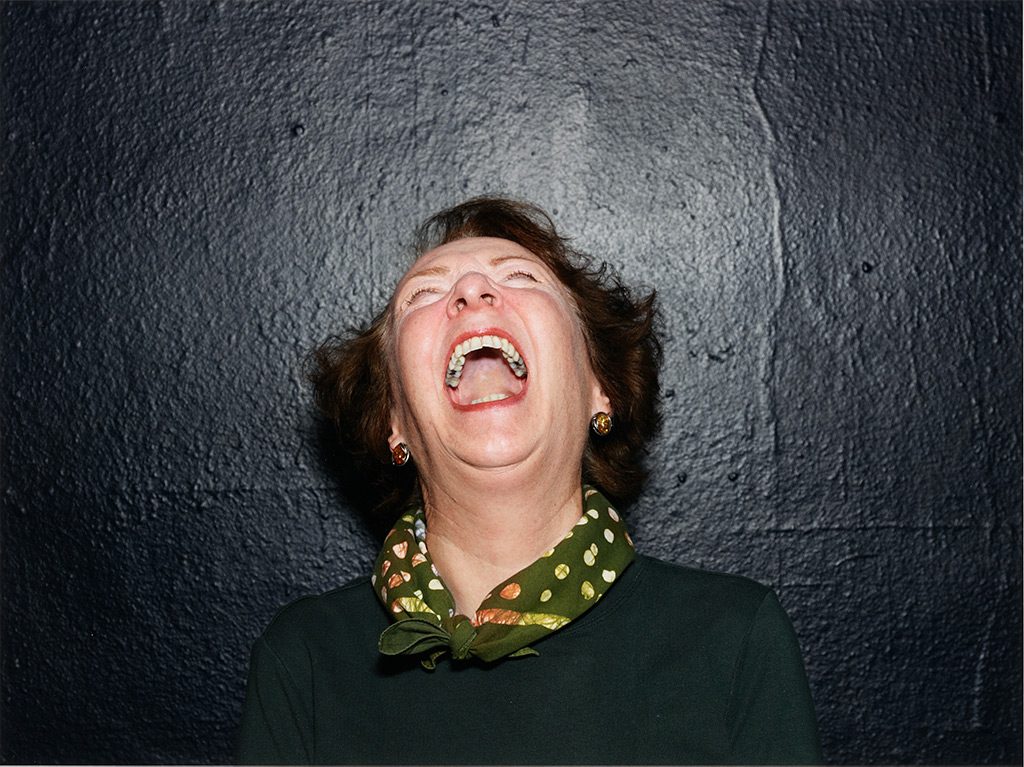The Getty’s new photography exhibit showcases the expressions of all mankind
Through October 7 at the Getty is a smallish photography exhibit with an intriguing theme: faces. Featuring 45 works from the museum’s permanent collection, it’s called “In Focus: Expressions.”
“The human face has been the subject of fascination for photographers since the medium’s inception. This exhibition includes posed portraits, physiognomic studies, anonymous snapshots and unsuspecting countenances caught by the camera’s eye, offering a close-up look at the range of human stories that facial expressions — and photographs — can tell.”
Some will be familiar.
There’s Edward Steichen’s “Greta Garbo” (1928), the one where she’s scrunched up in a luxe black sweater and appears to be holding her head together with her hands.
There’s Walker Evans’ iconic photo of Alabama sharecropper’s wife, Allie Mae Burroughs: the delicate neck, the furrow of worry between her young brows, the tiny scab on her lip, the thousand-yard stare.
Diane Arbus’ “Identical Twins, Roselle, NJ” (1967), is of two girls, age eight or so, in matching white-collared dresses. As the observer, you’re first compelled to search for differences between the two, then invited simply to ponder the weirdness of identical twinship.
The expressions on view run the gamut of emotions.
In Carl Mydans’ “China War” (1948), an old, black-kerchiefed woman stands among ruins that could serve to illustrate the psalms of Lamentation. In “Los Angeles #7” (1971), by Anthony Hernandez, a black man, alone on a crowded street, shields his face with one hand. Is he crying, or did he just get a pesky piece of soot in his eye? In photojournalist Weegee’s 1943 portrait, Emmett Kelly in clown-face dolefully doffs his hat.
“There are photographic fanatics, just as there are religious fanatics,” observed Weegee (real name Arthur Fellig, 1899-1968). “They buy a so-called candid camera … there is no such thing: it’s the photographer who has to be candid, not the camera.”
Lewis B. Hines’ “Connecticut Newsgirls” (about 1912-13) glows with the radiance of small-town America entrepreneurship. A blurry black-and-white snap (mid-1900s, maker unknown) entitled “O, Romeo,” is of a sailor down on his knees in a suburban driveway, proposing to a girl in overalls and a delightfully moony smile.
In Paul Strand’s “Blind Woman — New York” (1916), the woman in question, one eye glaucous, the other blankly staring, wears a numbered license around her neck — required at the time to beg on the streets — and a hand-lettered sign trumpeting her condition.
Nicholas Nixon’s “W. Canfield Ave., Detroit” (1982) is of three young African-American men, blatantly posing, who manage to look simultaneously menacing, virile and vulnerable.
A significantly larger exhibit called “Icons of Style: A Century of Fashion Photography” fills several adjacent galleries. That, too, is well worth a look.
Personally, I never tire of those shadowed black-and-white photos of impossible elegance from the 1940s and ’50s: Suzy Parker in a v-back evening dress taking a call at a fancy restaurant, by the great Lillian Bassman; Irving Penn’s portrait of his wife, model Lisa Fonssagrives Penn, in chic wide-brimmed hat, fur-trimmed harlequin dress and long black gloves, smoking a cigarette.
However gorgeous, though, the faces in the fashion photos are blank, studied, polished, all surface.
The faces in “In Focus: Expressions,” by contrast, contain multitudes, as Walt Whitman put it. In their stark particularity, they speak for all mankind.
The late historian and theologian Donald Nicholl (1923-1927) wrote a book called “Holiness” that should be better known. In it, he recounts a story showcasing the transformative power of the human face:
“We have from the pen of [French convert] Olivier Clément a moving account of how a face saved his life. It was in the days when he was an atheist, though an unhappy one. He was so unhappy, in fact, and so oppressed by the meaninglessness of human life that he was seriously thinking of committing suicide. Then one day as he was walking depressed beside the Mediterranean sea-shore his attention was riveted by the face of someone who was passing by. The person's face was radiant with meaning, full of such goodness as can only come from years of cultivating a loving heart. In a twinkling Clément's suicidal thoughts were dispelled and a seed sown in his heart that was eventually to transform him into an ardent believer. Not surprisingly, Clément asserts with warm conviction that there is a branch of theology that is properly described as a ‘theology of faces.’ ”
Alec Soth’s “Mary, Milwaukee, WI” (2014) illustrates the point. Mary, middle-aged and plump, could be in a neighborhood bar, or an art gallery or a bowling alley. In red lipstick and a jaunty scarf, she’s rearing back in no-holds-barred, full-bellied laughter. Her mouth is wide open. We can see her fillings.
The press release notes that the expression “could perhaps be misconstrued as a scream.”
Perhaps.
But to me, Mary’s face explodes with the kind of unselfconscious, exuberant joy that would make anyone who gazed upon it want to live forever.
Heather King is a blogger, speaker and the author of several books. For more, visit heather-king.com.
SPECIAL OFFER! 44 issues of Angelus for just $25! For less than 50 cents a week, get the finest in Catholic journalism with first-rate analysis of the events and trends shaping the Church and the world, plus the practical advice from the world’s best spiritual writers on prayer and Catholic living, along with great features about Catholic life in Los Angeles. Subscribe now!

